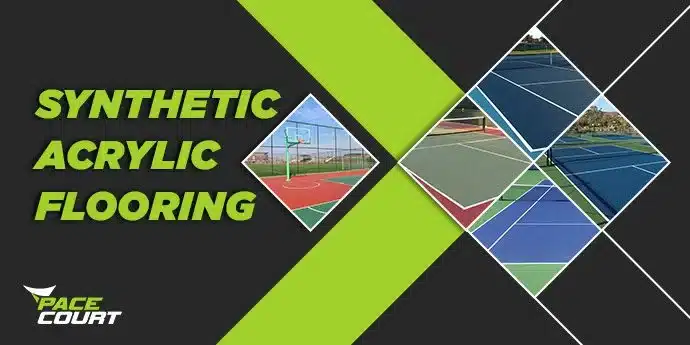Introduction:
In this age of heightened environmental consciousness, industries are trying their best to minimize their ecological footprints globally. A significant concern in this regard is the production and use of synthetic flooring material. Pacecourt, a leading manufacturer of synthetic acrylic sports flooring materials acknowledges these concerns. Our commitments go beyond quality products to encompass sustainability in all our undertakings.
This blog will try to answer some of those questions by looking into the environmental impacts that could result from using such synthetic flooring materials, as we learn the journey behind them. Through doing so, we hope to make sense of an issue that is very complicated. This shows how committed we are to matters regarding sustainable development.
For this article on synthetic flooring materials, let’s take a deeper look and take steps toward a greener and more sustainable environment.
The Lifecycle of Synthetic Flooring Material:
Life cycles of synthetic flooring such as acrylic sports surfaces are difficult from start to finish; each stage must therefore be considered to evaluate their environmental impacts.
1. Raw Material Acquisition:
Synthetic Flooring Materials are generally made up of polymers and chemical additives that are initially obtained as raw materials. This could include mining, drilling, and energy-intensive manufacturing processes which all contribute to carbon emissions and exhaustion of resources.
2. Manufacturing:
At this point, the raw materials have been procured for processing to change them into final products. Accordingly, there is usually much usage of energy by procedures involved as well as chemical treatments that emit greenhouse gasses thereby polluting the atmosphere.
3. Installation:
When installing synthetic flooring materials, volatile organic compounds (VOCs) from adhesives and other substances can cause indoor air pollution. Moreover, poor installation techniques can produce trash leading to environmental degradation.
4. Use:
Although synthetic floorings are made for long-term use they require less frequent replacements. However, maintenance practices such as cleaning or refinishing may involve the use of harmful chemicals if not properly handled could damage the environment.
5. End of life:
Synthetic flooring materials eventually reach their lifespan and need to be disposed of. Classic disposal techniques such as landfills can have serious environmental implications that persist for long periods.
Towards Sustainability: Pacecourt’s Pledge
Being a pioneer in the sector of synthetic acrylic sport flooring, Pacecourt is not driven by innovation and performance only but also a constant commitment to environmental sustainability. Our dedication to sustainability cuts through every part of our business; product design, manufacturing processes, and beyond.
Advanced Material Techniques:
Pacecourt spends a lot on research and development aimed at finding alternative materials and manufacturing methods that have the least negative environmental effects. We are trying to provide products with high-performance levels as well as eco-friendly ones by constantly pushing the boundaries of innovation.
Energy Saving Measures:
We recognize energy consumption’s role in the environment. That is why we have put in place energy-saving technologies and practices in our production plants which help reduce our carbon emissions and hence lower our overall energy usage. So we can make environmentally friendly synthetic court.
Sustainable partnerships:
Pacecourt collaborates with suppliers, buyers/customers, and industry stakeholders to influence sustainability across supply chains. Building relationships based on shared values and objectives to enhance our effect and make a long-term positive impact.
Conclusion:
From our investigation into the Synthetic Flooring Material's life cycle and ecological implications. We have learned about some of the prospects and limitations concerning sustainability.
Hence, at Pacecourt being an environmental enthusiast is similar to adopting sustainable manufacturing practices. Our approach includes material development, energy conservation, and the establishment of long-term alliances. Minimize the negative effects on the surroundings.
Therefore today the world should not take these efforts alone but be carried out by various stakeholders customers included for us. As business entities to become better sustainable businesses around the globe. In this way, we can create an environment where man-made floorings are working alongside nature without any conflicts or problems occurring.


